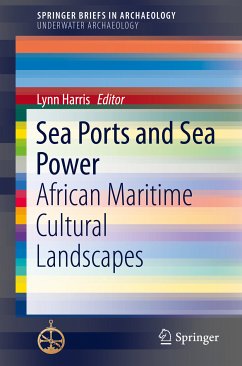Specifically, the contributors address the sub-theme of sea ports and sea power as part of understanding the African maritime landscape. Sea ports and surrounds are dynamic centers of maritime culture supporting a rich diversity of cultural groups and economic activities. Strategic locations along the African coastline have associations with indigenous maritime communities and trade centers, colonial power struggles and skirmishes, establishment of naval bases and operations, and World War I and II engagements.
Dieser Download kann aus rechtlichen Gründen nur mit Rechnungsadresse in A, B, BG, CY, CZ, D, DK, EW, E, FIN, F, GR, HR, H, IRL, I, LT, L, LR, M, NL, PL, P, R, S, SLO, SK ausgeliefert werden.









